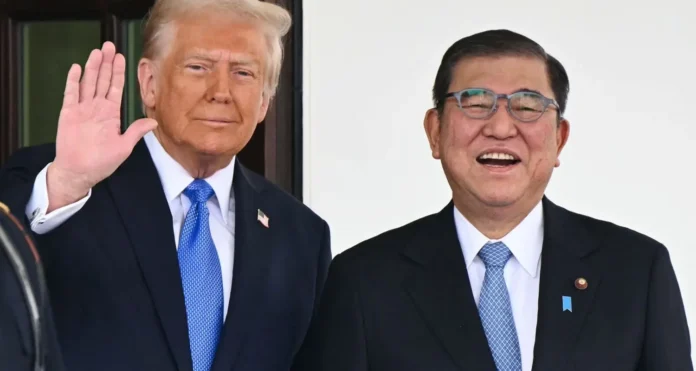Key Terms of the Deal
President Trump said on his social feed that the United States and Japan have set a 15 percent charge on all goods shipped from Japan to the United States. This replaces the current 10 percent rate and stops a planned rise to 25 percent that was due on August 1, 2025. He said the move will cover about $148 billion in annual imports, with nearly $58 billion tied to cars and parts.
Major Investment Promise
At the same time, Mr. Trump said Japanese firms will commit $550 billion in new investment in the United States. He added that American workers will get most of the gains from that money. Japan’s prime minister said he will review the details before he moves ahead. The statement did not explain how that profit split will work.
Reaction in Financial Markets
After Mr. Trump’s announcement, the Japanese yen rose against the dollar, and many stocks shifted as traders weighed the new deal. The change to a 15 percent tariff offers more certainty than the threat of a 25 percent rate that had hung over Japanese exporters. That clarity matters most for car makers who faced an extra 25 percent charge on vehicles and parts since April 2025.
Broader Trade Context
This pact is part of a wave of “reciprocal charges” that began earlier in 2025. Mr. Trump set high fees on many nations as he sought to rebalance trade. Japan had first faced a 24 percent rate under a presidential order, then a 25 percent rate in letters sent to several capitals. Before this deal, Tokyo also feared extra fees on oil and other key items.
What It Means for Both Sides
The new terms drop the chance of a big jump in fees on August 1 and give businesses a clear path to plan next year. U.S. farmers and automakers gain extra space in Japan, and Japanese firms get a stable rate for goods they sell here. Still, some experts say that the profit pledge may prove hard to track and that details could shift once officials meet again.
Personal Analysis
And that is why this deal stands out, as it shows a push to calm markets and set a middle ground that both sides can accept. It also reflects the shifting balance in Washington and Tokyo, where leaders must answer to voters who want jobs and fair trade. I see the big investment promise as a way to win more support at home, but it may test trust if the terms stay vague. Over time, companies will watch closely how those funds move into real projects.
Sources: bloomberg.com



